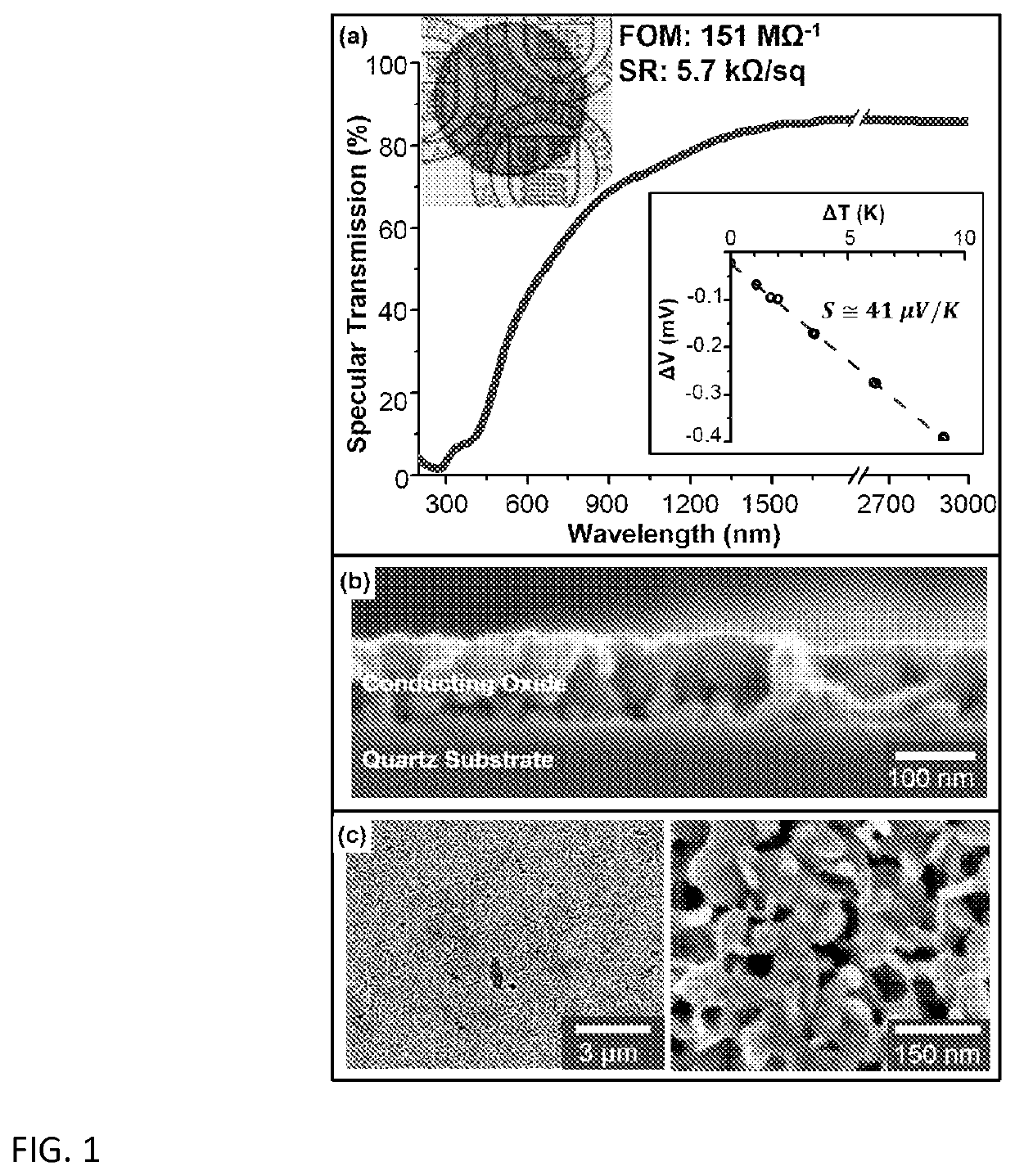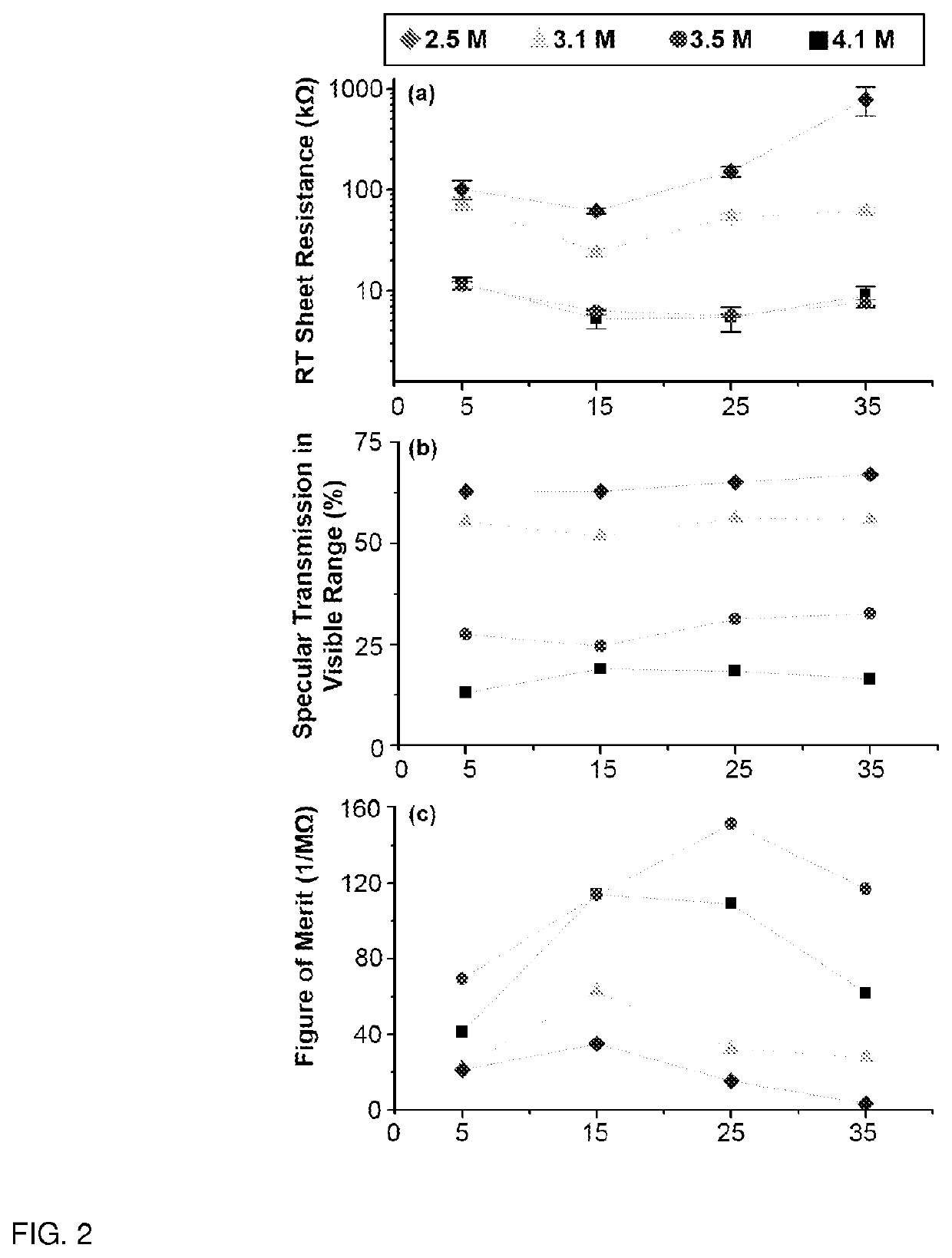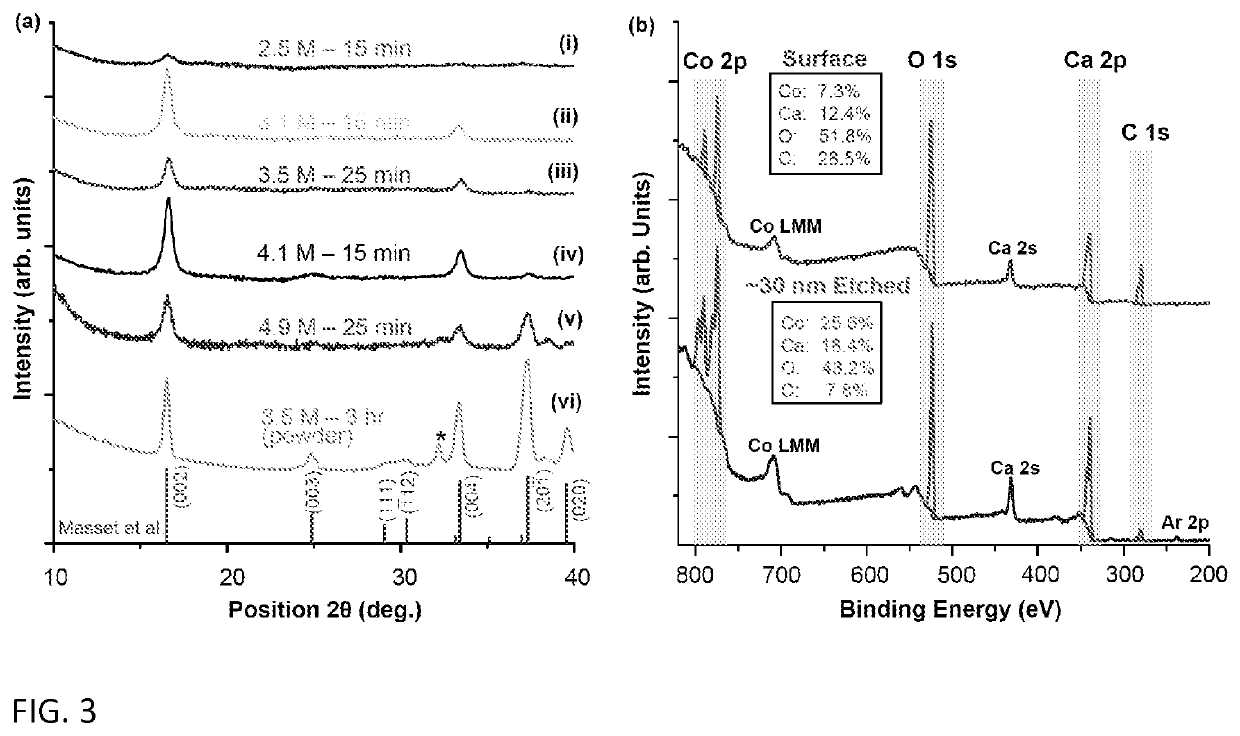Misfit p-type transparent conductive oxide (TCO) films, methods and applications
a transparent conductive oxide and film technology, applied in the field of mixed metal oxide materials, can solve the problems of poor optical transmission of n-type tcos, low cost and scalable manufacturing of p-type tcos, and insufficient commercialization of p-type tcos, etc., and achieve cost-effective and scalable processes
- Summary
- Abstract
- Description
- Claims
- Application Information
AI Technical Summary
Benefits of technology
Problems solved by technology
Method used
Image
Examples
Embodiment Construction
[0031]Since the pioneering work on thin films of delafossite CuAlO2, p-type TCOs have been vigorously researched with the goal of creating invisible circuits. To date, a material with a comparatively high conductivity among p-type TCOs is CuCr1-xMgxO2, with conductivity of 220 S / cm and visible range transparency of 30-40%. However, thin film manufacturing routes in the majority of these studies have been restricted to CVD and PVD techniques. These methods are more expensive and less scalable than solution-based techniques, which are simpler and faster. Solution-based synthesis techniques, so far, have provided only limited success for p-type TCO thin films, with performance hampered by low conductivity, induced from non-uniformity and excessive porosity. Until now, the highest p-type conductivity from solution-based techniques is only ˜1 S / cm.
[0032]In light of the foregoing, embodiments provide p-type TCO materials that are formed using solution methods, and with enhanced optical tr...
PUM
| Property | Measurement | Unit |
|---|---|---|
| p-type conductivity | aaaaa | aaaaa |
| optical transparency | aaaaa | aaaaa |
| optical transparency | aaaaa | aaaaa |
Abstract
Description
Claims
Application Information
 Login to View More
Login to View More - R&D
- Intellectual Property
- Life Sciences
- Materials
- Tech Scout
- Unparalleled Data Quality
- Higher Quality Content
- 60% Fewer Hallucinations
Browse by: Latest US Patents, China's latest patents, Technical Efficacy Thesaurus, Application Domain, Technology Topic, Popular Technical Reports.
© 2025 PatSnap. All rights reserved.Legal|Privacy policy|Modern Slavery Act Transparency Statement|Sitemap|About US| Contact US: help@patsnap.com



